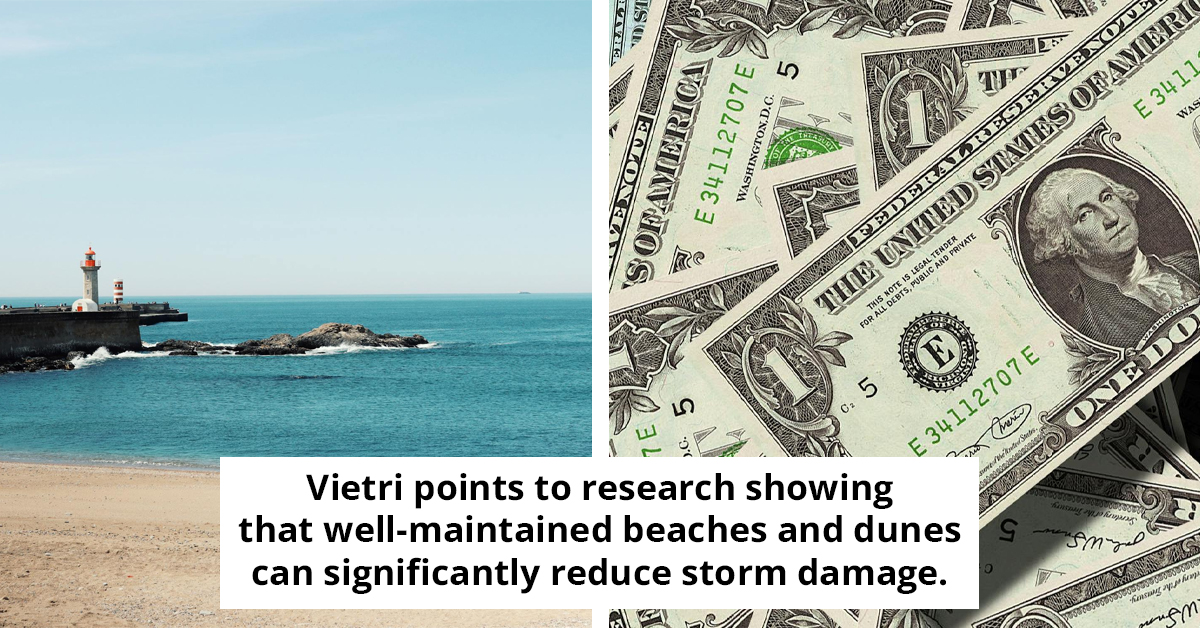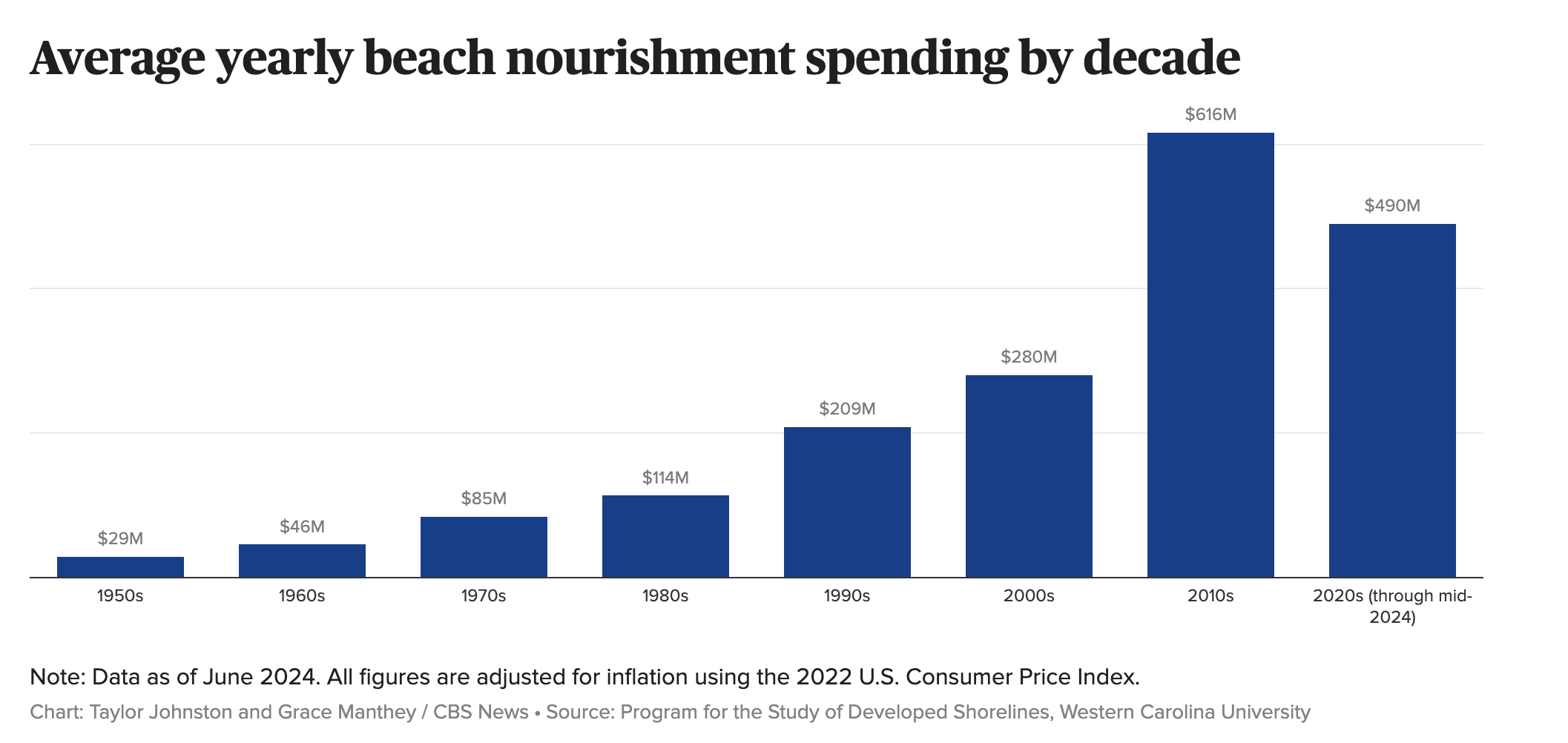
You Won't Believe What The Government Is Blowing Millions On Now
Hint: Sand. Lots of it.

Every few years, the sound of heavy machinery echoes along the coastlines of the United States as sand is pumped onto beaches to combat erosion. In Wrightsville Beach, North Carolina, a recent beach nourishment project involved moving a massive amount of sand to restore the beach's width after severe erosion.
This project, like many others across the country, was funded by federal tax dollars and carried out by the U.S. Army Corps of Engineers. The price tag? Around $15 million, similar projects occur roughly every four years.
While some coastal residents and business owners, like Jeff DeGroote of Wrightsville Beach, see these projects as essential for maintaining their livelihoods and protecting their communities from storm damage, others are questioning whether these massive expenditures are a wise use of taxpayer money.
Critics argue that with over $10 billion spent on more than 2,500 projects since 1923 and an adjusted cost of nearly $16 billion when accounting for inflation, the returns on these investments are not as clear-cut as proponents suggest.
Data from the Program for the Study of Developed Shorelines at Western Carolina University shows that beach nourishment spending has skyrocketed over the decades. In the 1950s, average yearly spending was just under $30 million.
By the 2010s, that figure had jumped to an average of $616 million annually, driven in part by an increase in the frequency and intensity of storms, as well as rising sea levels linked to climate change.
Despite these growing costs, supporters like Joe Vietri of the U.S. Army Corps of Engineers argue that beach nourishment projects provide crucial coastal defenses. Vietri points to research showing that well-maintained beaches and dunes can significantly reduce storm damage, acting as buffers between the ocean and developed areas.

In this view, beach nourishment is akin to an insurance policy—an upfront investment that mitigates future losses.
However, not everyone is convinced. Andy Coburn, associate director of the Program for the Study of Developed Shorelines, raises concerns about the sustainability and fairness of these projects. Coburn suggests that as sea levels rise and the cost of sourcing sand increases, the economic viability of beach nourishment will diminish.
He also questions the public policy implications, asking who truly benefits from these projects and whether alternative strategies, like relocating vulnerable properties or investing in other forms of coastal protection, might be more effective.
 Photo by Efrem Efre from Pexels
Photo by Efrem Efre from PexelsThe debate over beach nourishment highlights the complexities of managing coastal resources in an era of climate change. While some advocate for continued investment in sand replenishment as a means of protecting coastal communities, others argue for a reevaluation of how public funds are used in the face of rising seas and escalating costs.
As the U.S. continues to grapple with these challenges, the future of beach nourishment remains uncertain, with decisions needing to balance economic, environmental, and social considerations.
The rising expense of these projects and the looming threats posed by climate change suggest that new approaches and innovative solutions may be required to safeguard coastal communities in the years ahead.
Whether through increased reliance on local funding, strategic retreats, or alternative protective measures, the conversation around beach nourishment is sure to evolve as the realities of our changing climate become ever more apparent.
Sophia







